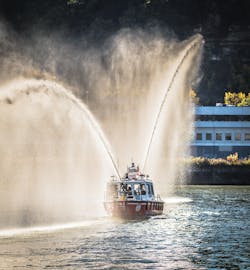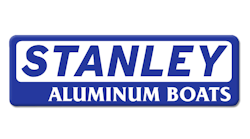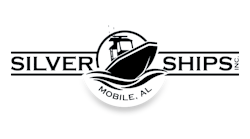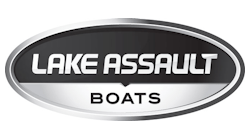Boats Can Be Like 'Floating Fire Trucks' Providing Emergency Services
Experts say there’s a growing demand for fire and rescue boats in the United States as weather patterns change and storms grow more powerful. Boats are now called upon for a variety of tasks including victim rescue and recovery, water supply for shoreline dry hydrants for fire suppression and to provide protection for high-value marina and public places.
Firehouse talked to representatives from three fire/rescue boat manufacturers, Lake Assault, Silver Ships and Stanley Boats, to get their ideas on how best to specify a marine asset for the fire fleet. They shared what fire departments should look for when buying a boat.
Lake Assault
Gary Smith is director of sales and marketing for Lake Assault Boats, an aluminum boat builder in Superior, WI. Smith said the first thing fire departments need to consider is what they want the boat to do.
“We try to understand the boat’s mission,” Smith said. “Is it fire suppression? Is it search and rescue? Do you have a dive team? There could be many uses for the boat. It could be a multi-mission boat.”
Once the mission has been determined, Lake Assault will then begin the process of custom designing and then building a boat for a particular purpose.
“Once we figure out what the mission is, we can design the boat for exactly the need,” Smith said.
Smith added the process is much like what firefighters might use when they specify apparatus for land use.
“They’re sort of like floating fire trucks,” Smith said. “…We design them and the customer will add and delete things and make changes as they’re designed. When they think they’re ready to go ahead and build, we review the specifications and then build it to meet their expectations.”
When considering mission, firefighters need to determine whether the boat will be trailered to different locations, or if it will be moored at a specific spot, only to be hauled in for maintenance, Smith said, noting that it will determine the size of the boat. If the boat will be moved to multiple locations, Smith said firefighters might want to consider a 17-foot landing craft or something catamaran-size for easy deployment.
On the other end of the spectrum, Smith said Lake Assault can build up to 50-foot boats. Typically these bigger boats are designated for fire suppression, Smith said, adding that boats can have pumps from 500 gpm to 4,000 gpm, or more, depending on the needs.
Fire boats can provide unlimited water when used on static water bodies, Smith said, noting that many fire departments use boats to supply 5-inch large diameter hose (LDH) for fire suppression on rocky shorelines or steep grades where people perch cabins and, sometimes multi-million dollar waterfront properties. Some communities strategically place dry hydrant systems and the fire boats hook up to them to charge the lines. From there, land-based tankers haul the water to fire sites.
“That’s a real common use of fire boats,” Smith said, adding that they can also be equipped with monitors so they’re capable of conducting fire suppression solo.
Smith said boats are obviously well suited for rescuing people in trouble on the water and many boats are built to do just that, exclusively. With landing craft-style designs, rescuers can “scoop people right up” out of the water and transport them to safety, or provide medical care if needed.
“There’s a whole set of criterion fire departments should consider when building a boat for just water rescue,” Smith said. “There’s lighting needs for night rescues, power supplies for electronics and whatever is needed for medical services.”
Boats that marry suppression and rescue missions need special attention to space and equipment, Smith said.
And propulsion for all boats must be considered, Smith said. Some boats will be required to travel fast for long distances to get to the emergency. Some might be in the ocean, some will be in fresh water and still others might be in brackish waters, which will require different metals and materials.
Smith said most boats made by Lake Assault use outboard motors, but they do build them with inboard/outboard propulsion and even jet propulsion for shallow water operations.
Once the boat is built, Smith said it is taken out for sea trials and testing. That’s when the client comes in for approval and acceptance of the new vessel.
Lake Assault can arrange a variety of training packages, but a three-day package comes with the boat and that consists of boat handling and maneuvering. Some departments want more and Lake Assault will provide it. After that, the boat is delivered, he said.
“And away we go,” Smith said.
Silver Ships
Another aluminum boat builder is Silver Ships, based in Theodore, AL. Steven Clarke is the company’s CFO and shared tips about specifying and building fire and rescue or combination boats.
“Firefighters should come up with a list of the things they’d like it to do and a list of things it must do,” Clarke said.
The more things firefighters want their boats to do, the bigger and more expensive the boats become, Clarke said. That’s not a problem as Silver Ships builds custom boats to fit the customers’ needs, he said.
“Every boat is a bit of give and take,” Clarke said. “There are limits on weight and on size. Money is the only consideration.”
Clarke said firefighters must look at the area they service. If the boat is asked to go far and fast, it will dictate what kind of vessel will be built.
Clarke said firefighters should be thoughtful when they decide with whom they decide to do business.
“Choose the best,” Clarke advised, adding that Silver Ships has "people who can explain the trade-offs, some of which firefighters may have never even thought about.”
He said weight limitation, and beam considerations—the maximum width of the ship’s hull—need to be addressed. Clarke said if department’s plan to trailer their boat from a central location to emergency scenes, or even if they have to take them out of the water for service, boats that are extremely wide may present transportation problems.
Clarke said federal and state departments’ of transportation have limitations on what can be hauled over the road without special permits with lots of requirements that can be expensive to meet.
Even the type of water in which the boat will be used will make a difference in the materials used for equipment, Clarke said, noting that even the number of personnel employed to run the craft makes a difference on what it can carry and how it should be built.
Many of the boats Silver Ships builds can accommodate four firefighters and two patients with full EMT stations, Clarke said, adding those boats are typically built like landing crafts. Police departments use them to launch ATVs for investigations in remote places.
“Space is always a premium,” Clarke said. “…You have to know what equipment you have to make sure the boat is stable.” He added that making the boat a little wider might be necessary to meet the boat’s mission.
For propulsion, Clarke said his company prefers to use outboard motors. He said it is now possible to place up to four 350-hp outboard motors on a vessel, which provides plenty of power.
He said when fire departments are looking to power fire boat pumps, they should look for a separate engines to drive them. “A separate engine is preferred and at least one inboard engine should not be used to power a pump and only dedicated to propulsion," Clarke Said.
Firefighters and responders also need to be mindful of the electronic equipment they’ll be using on the boats. Engineers look at electrical loads and also are very mindful of corrosion and pay attention to electrical connections to make sure the equipment operates correctly. Clarke also said Silver Ships is available to work with customers to make sure what they install after the vessels are built works properly and won’t cause damage to their marine assets.
On the topic of corrosion, Clarke said aluminum is a superior material to use in boat building because it won’t rust. He added that aluminum is also a better choice than fiberglass because of the strength and the durability of the material.
“We refurb our boats all of the time,” Clarke said. “They can be 25, 30 years old and we strip them down and refurb them at half the cost of a brand new boat.”
Even departments that have a budget for a big boat, it’s best to custom build the boat for the department’s specific mission. Size, speed, weight, strength and abilities are all factors in boat design, he said. Bigger boats require more, expensive maintenance.
“They are expensive things to maintain,” Clarke said. “That’s why it’s important to get a good work boat. It’s always a good investment to get a vessel that is custom built for the mission. They’ll last longer and perform for years to come. A custom built, aluminum boat is a good investment.”
Stanley Boats
Stanley Boats, a division of Connor Industries, in Parry Sound, Ontario, Canada, is a builder of aluminum fire and rescue boats. Doug Coupar is the company representative for the United States and the Caribbean.
“The market in North America consists of three broad categories,” Coupar said. “We have boats that are dedicated firefighting vessels. Then we have combination fire and rescue boats. And there’s a strong emerging market for rescue boats, pure and simple.”
Coupar said boats come in a variety of lengths and sizes with a variety of missions, including specialty boats used by search and rescue teams as well as police responders.
“Where I find myself the busiest is in the fire rescue and rescue boat market,” Coupar said. “I am typically quoting for departments that are now finding they have a need for a marine asset in their fleet.”
Many of the boats Stanley Boats build start at 24 feet and go up to more than 40 feet, Coupar said, adding that the larger boats are typically dedicated to fire suppression, although some have multi-purpose missions.
Coupar said that the increased frequency of bad weather, including hurricanes and lots of flooding on the eastern seaboard of the United States, has forced many departments to consider adding some sort of boat to their arsenals.
“Demand for rescue boats is like we’ve never seen before,” Coupar said, adding that weather changes have caused flooding and water emergencies in areas that had previously been unaffected. That has left many departments scrambling to purchase rescue boats.
Often departments are left to their own devices in times of water emergencies, Coupar said. State and federal agencies are swamped and they can’t provide assets as readily or as rapidly as they once did because of increased demands.
“The hurricanes we saw in Texas and Florida were more extreme than usual,” Coupar said. “Hundreds of agencies did not have the assets they needed for the immediate needs of their communities.”
The demand was greatest for boats that could navigate shallow, debris-filled water, Coupar said.
The extreme weather has caused nearly all responders along waterways to look at their marine responses to figure out “what they can and cannot do,” Coupar said.
Coupar said the American waterway system is complex and interconnected from the Great Lakes to the Mississippi River to the Gulf of Mexico. Water can quickly overwhelm a geographic area and, with nowhere to drain, flooding can go on for weeks, Coupar said, leaving communities with boats as the only means of access to flooded areas.
Stanley Boats makes aluminum vessels with modified V-bottoms that flatten out, Coupar said, allowing them to navigate the shallowest of water safely, and navigate deeper waters as well.
“We think we’ve got a great design,” Coupar said. “They are not flat-bottom boats. In fact we don’t recommend flat-bottom boats."
Coupar said Stanley Boats are aluminum, so they are lightweight and can be transported easily by trailer if needed. Most are powered by outboard motors, but the company also has jet-powered boats available, which are well-suited for extremely shallow waters.
Coupar said once an agency has determined they have a need for a boat, the officers and users have to determine the fundamental needs.
“Every department will have its own ideas on how to approach the purchase, but all the officers and everybody have to be clear about the mission,” Coupar said.
Lightweight, purpose-built boats can be towed to the nearest launch point and go to work almost immediately, Coupar said. They represent a “very modest acquisition” for most departments and training is readily available and the boats can be staffed as needed, he added.
Larger boats, up to 30 feet and more, need dedicated staff, usually 6 to 12 people, so agencies have to think about those commitments of resources and how it will affect the mission, Coupar said.
Coupar also suggested that departments and emergency response agencies should work with neighboring departments to develop mutual-aid agreements and response plans as they consider what kind of boat to purchase.
Neighboring communities might have very similar needs and waterways, Coupar said.
“You should look beyond your jurisdiction,” Coupar said. “Look at projected flooding for your area and your state.” He said the National Oceanic and Atmospheric Administration (NOAA) has highly accurate maps that are updated frequently. Those maps offer a good bases from which to build a response plan and to determine the number of marine resources needed.
“In a flooding emergency, most often they can only be answered by a marine unit,” Coupar said. “…We have designated life-support units, dive units, units that work in complete darkness. We have high-speed units that can travel to incidents several miles away and get there in minutes.”
It’s important to determine how each marine asset fits into the region and the jurisdiction, Coupar said.
“Sometimes, people just need to step into a boat to escape from whatever is coming and that’s all that’s needed,” Coupar said.
And, sometimes, much more is required and boats become the only means to provide life-saving services and fire protection.
“There are always parts of the population that don’t want to evacuate,” Coupar said. “They ignore orders and the announcements officials give saying there’s nothing they can do. We don’t want to suggest that we can overcome these challenges, but boats can be the first in to help with rescues.”
There are some departments that want boats to do everything, Coupar said. They want fire suppression capabilities and Stanley Boats offers pumps from all the manufacturers in sizes from 500 gpm to the most popular size of 1,500 gpm.
Some departments want space for PPE, SCBA bottle racks and some want medical equipment and oxygen, Coupar said, adding that boats with foam capabilities have also become popular.
“We rely on boats for much more than transportation,” Coupar said. “We need them for whatever is necessary. In an extreme emergency, there may be no other way to provide the assistance than by boat. I predict in the coming decades, boats will become more and more the standard for all emergency agencies.”









